If you live anywhere in the South, you’ve likely heard the old joke that says “whenever someone dies, they don’t go to heaven (or that other place), without connecting in Atlanta!”
Having spent 14 years living in various southern cities and connected through Atlanta more times than I care to remember, there’s no doubt the scene at Hartsfield-Jackson International Airport (ATL) the other weekend is one that won’t soon be forgotten.
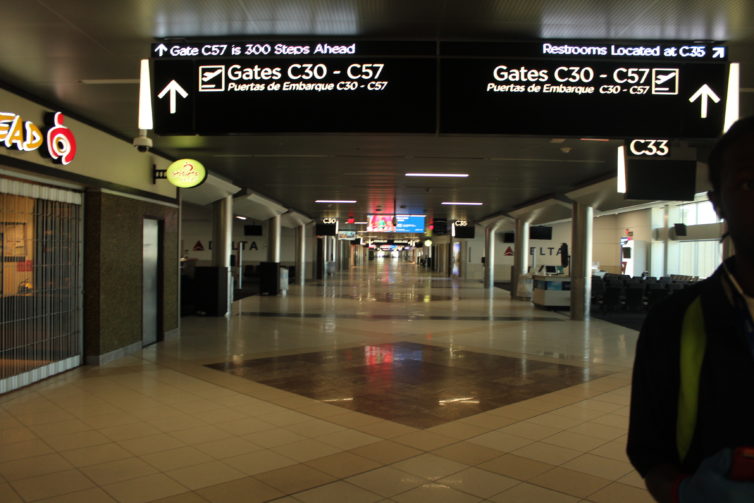
A peak into an empty “C” gates at ATL, thanks to an airport worker who allowed this pic while the door for employees was open.
Recently, I needed to take a number of flights for family reasons, and in the current coronavirus climate, I wasn’t sure what to expect. My adventure took me through one Delta mega-hub (Atlanta ATL) to another (Minneapolis MSP), where typically the flights would be full. However, this time they were only about 25 percent occupied. The ATL to MSP flight, usually an A321 or 757, had been replaced by a smaller 737-800.
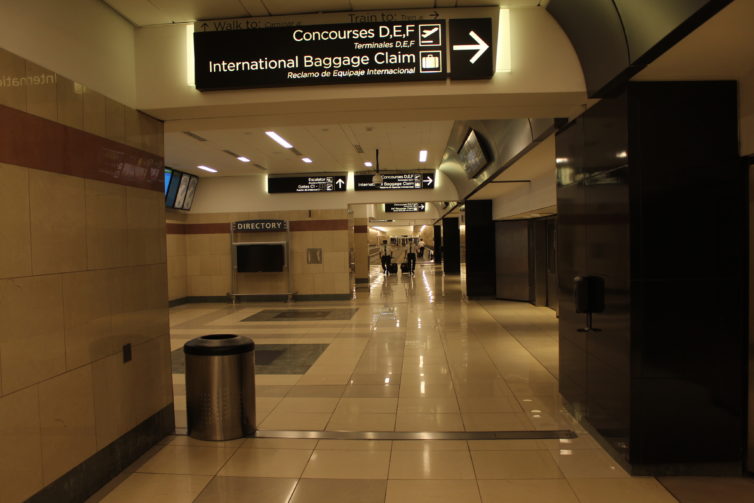
No passengers and just 2 pilots occupy the “Plane Train” level at ATL below the C gates.
Atlanta currently has multiple concourses closed with fully sheetrocked walls and security doors to allow only airport and airline staff to enter. The ’œC’ and ’œE’ terminals were just empty shells. TV screens packed with flight info now had just a couple active monitors.
BONUS: Feeling the impact of COVID-19 on the US Commercial Airline Industry
The food court in the E terminal had just one restaurant open: McDonald’s. They were so happy to see anyone that they gave me 10% off my McDouble — that 20 cents will go far someday, I just know it! You know it’s bad when even airport concessions start discounting prices.
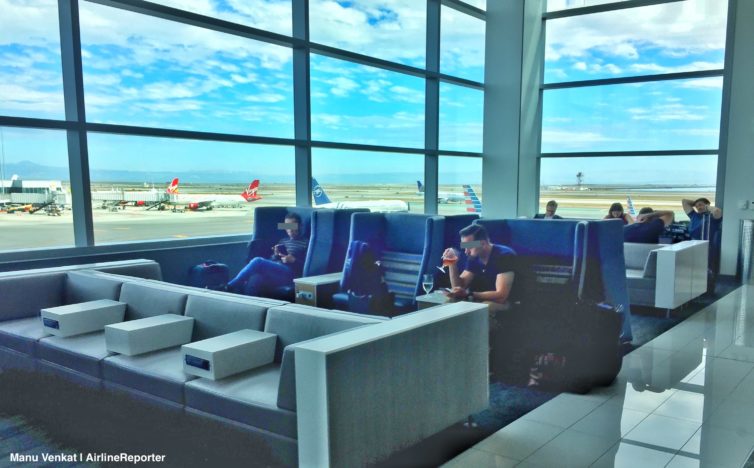
I’m biased as a Bay Area resident, but I think San Francisco SFO offers some of the best casual plane-spotting in the country, thanks to its two set of parallel runways located relatively close to the terminal buildings. Many of the airport’s premium lounges are located on the floor above the general concourse, giving lucky lounge-goers some especially good views. As if the lounge life wasn’t already awesome enough.
Delta doesn’t have a formal hub in San Francisco. But as an endpoint of the airline’s premium transcontinental service from New York JFK, SFO is important enough to earn a Delta Sky Club. I dropped by recently and found a lot to like, from fresh decor and furniture, solid food and drink, and (most importantly) great views of the ramp and runways through floor-to-ceiling windows. Read on for an overview of what you can expect if you drop by Delta’s Sky Club at SFO.
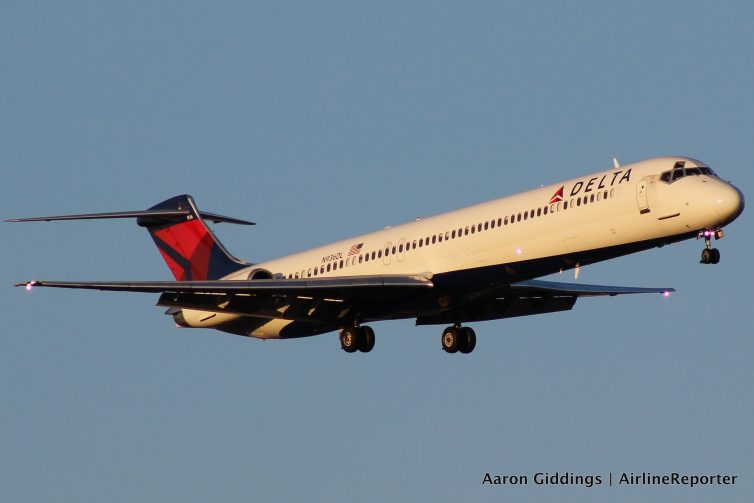
Delta MD-90
I’m not a particularly frequent flier. In fact, aside from a brief job hunting period in 2015 that saw me leaving SEA for a different destination each week for three weeks straight, I haven’t flown on commercial airliners more than twice a year ever. With that in mind, it was an interesting contrast when I booked my Delta Air Lines tickets for PAX South (a video game fan convention) with a route of FSD-MSP-ATL-SAT in economy to get there, and SAT-MSP-FSD in first class on the way home.
My trip planning had been determined by two main factors. The first was that the outbound routing gave me two legs on the MD-90. I love the DC-9 aircraft family, and will happily grab any opportunity to fly on them, particularly as they’re becoming increasingly rare in the fleets of major carriers. The second factor was my returning connection. When I booked my flight, I was only going to have a forty-five-minute layover in Minneapolis. I hoped that booking myself into seat 1A would ensure that I could make my connection, no matter how many terminals apart my two flights were.
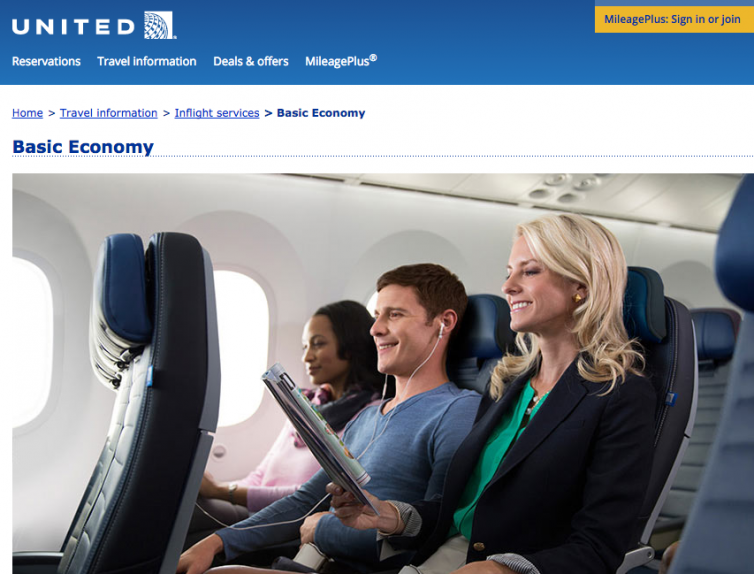
Will you be smiling that much when you fly Basic Economy? Photo: United Airlines
Even though the vast majority of my flying is in economy, it’s sometimes hard for me to know exactly what economy class is anymore. In the good old days, it reliably meant a seat with enough legroom, a drink, a snack, and my fair share of space in the cargo hold. But under pressure from ultra-low-cost carriers, U.S. legacy airlines have chipped away at what they offer travelers seated aft of the wing.
That trend took a major jump forward — or, depending on your perspective, backwards — with the introduction of new no-frills “Basic Economy’ fares that do the bare minimum to get you from Point A to Point B. Delta announced the rollout of its Basic Economy in select markets in late 2014, and has expanded it to other routes since then. United unveiled its own basic product late last year. Earlier this week, American shared that its own Basic Economy fares will be going on sale in February, starting with ten markets.
Is this new category of barebones fares good news for price-sensitive flyers? Or is it a new circle of hell in the sky? Read on for more on Basic Economy and what it means for you.
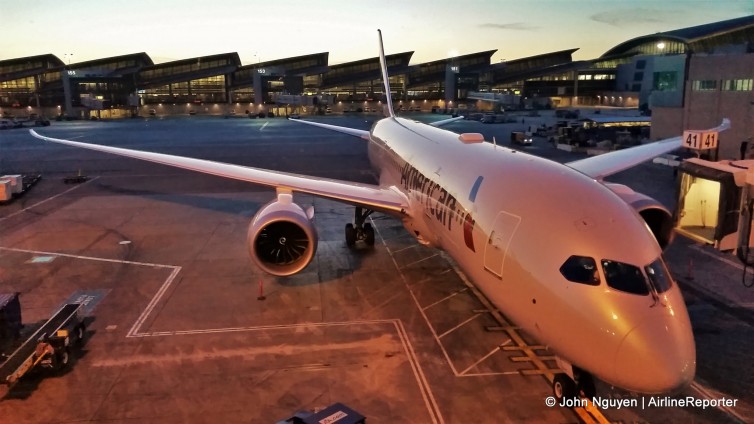
An American Boeing 787-8 (N812AN) at LAX; the 787-9 is a stretched version of the -8
This story has been updated to include new information about the availability of premium economy and anticipated dates for domestic operations.
American Airlines today announced new details and routes for its newest addition to the fleet, the Boeing 787-9 Dreamliner (789), which is set to arrive in the last quarter of this year. While American already operates 17 Boeing 787-8s (788s), four of the stretched -9s, with new business class seats and a cabin configuration to include a new Premium Economy section, will be delivered by the end of December 2016, with a total of 22 on order.
The 789s will initially be based out of American’s home base, Dallas-Fort Worth Airport (DFW), and on November 4 will commence service to Madrid-Barajas Airport (MAD) and Sao Paulo-Guarulhos International Airport (GRU).
AirlineReporter has received exclusive details on the inaugural route the 789 will actually fly…





